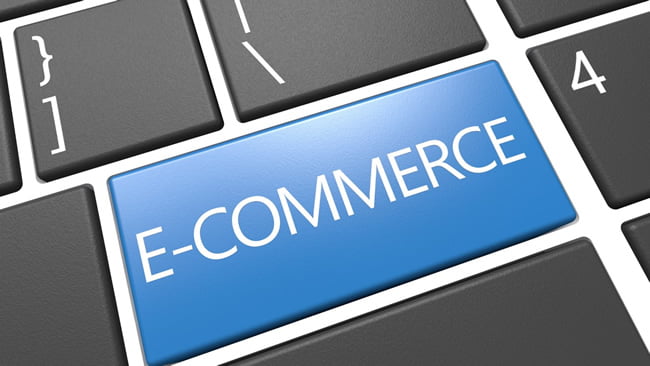Leading Countries for B2B eCommerce
The intent of this blog is to provide some general but essential guidelines when setting up an ecommerce business website: to know its technical terminology, to pay attention to the geographical peculiarities, and to understand the customers of the B2B ecommerce site.

What is B2B eCommerce?
To simplify, B2B eCommerce is a type of electronic trade where transactions take place between companies. But since this is a much more complex and strategic topic, it is good to make an important distinction right from the start: B2B eCommerce is not synonymous with online sales. We are facing a very important strategic measure for the competitiveness of a country’s economic system. And it is right, then, to deepen every aspect, as we will do in this guide.
The top countries with the highest eCommerce retail market share are led by China and the USA, while Europe records a total value of the eCommerce market equal to 509.9 billion euros. On the other hand, among the growing niches recorded from 2020 included food and beverages, sustainable, eco-friendly products, health and beauty, digital products, pet products, home office equipment, and eLearning/online courses.
The global eCommerce market evolution
According to the latest report published by shopify.com, the total global ecommerce market is anticipated to reach $5.55 trillion by the end of 2022. This is projected to grow over the next few years, showing that borderless ecommerce is becoming a money-making option for online retailers.
Two years ago, only 17.8% of sales were made from online purchases. That number is expected to reach 21% in 2022, a 17.9% increase in ecommerce market share over two years. Industry experts predict that this growth will accelerate, reaching 24.5% by 2025.
eCommerce as an absolute protagonist of Digital Marketing
Doing eCommerce is not a vague “opportunity”, but a real strategic choice that requires an entrepreneurial mind (not just digital) that knows how to pursue long-term objectives. It is true that an eCommerce campaign is one of the most difficult, ambitious and exciting challenges that the digital market encounters face when launching a business.
Here are some of the most common digital marketing terms
eCommerce: website or web portal developed and managed directly by the company to sell its products (sometimes even services) online. It can be small, medium, or large depending on the product categories, the references available, and the communication and pre and post-sales assistance services made available to customers.
Marketplace: online service that provides companies with bulletin boards, showcases or real virtual shops (eShops) ready for use, communication tools, order management, customer care, and above all, a pool of potential customers already registered and loyal to the platform. Some examples of popular marketplaces are Amazon, eBay, Etsy, Alibaba, AliExpress, Zalando, etc.
Lead generation: a set of activities utilized to reach a selected target clientele and generate lists of contacts and interest for a brand, a product, or a commercial offer.
Digital PR (Digital Public Relations): marketing and communication activities aimed at promoting the brand’s values , the ability of the company, its products, and its authority in the network of digital conversations.
Blogging: editorial activity which, through the creation, publication, and sharing of articles, posts, and other multimedia content (on the company website, third party sites, newspapers, online magazines, etc.), guarantees greater visibility to the brand and greater authority to its “voice”.
SEO (Search Engine Optimization): creating and optimizing content aimed at positioning the brand and its web content in the first results of search engines (e.g., Google) for the most used and attractive search words for its commercial offer.
SEM (Search Engine Marketing): set of promotional and advertising activities utilized to ensure maximum visibility of the brand and its offerings on search engines (e.g., Google, Google AdWords, Google Maps, Google MyBusiness, etc.).

SMM (Social Media Marketing): communication monitoring of the company’s channels on main Social Networks (e.g., Facebook, Instagram, Twitter, LinkedIn, YouTube, etc.). This normally consists of planning, creating, and sharing content of interest and added value for the users who follow the account (follower) and in the management of comments and conversations that lend themselves to giving voice and visibility to the brand.
SMA (Social Media Advertising): advertising activities based on the creation and “strategic” dissemination of company announcements, offers, and promotions to a well-defined target of users on the main social channels (e.g. Facebook Ads, Twitter Ads, etc.)
DEM (Direct Email Marketing): direct marketing campaigns based on the periodic sending of communications, promotions, and messages via email to a well-defined target of users with various objectives (lead generation, brand awareness, sales, loyalty, etc.)
Local Marketing: digital marketing activities on web and mobile platforms aimed at promoting an activity, event or offer in a local context (e.g. shop, neighborhood, city, etc.)
Retargeting: a set of advertising strategies on search or social channels, used to reach users who have already shown interest in the brand and its commercial offer (by visiting the eCommerce site, clicking on a Google Ad, commenting on content on Facebook, etc.) thus increasing the likelihood of purchase
Importance of language localization
In every aspect of digital business, the quality of the content is fundamental. This means that the translation itself will have to go hand in hand with the development and optimization of the site itself and the marketing strategies related to it.
When launching a B2B eCommerce business or starting a cross-border strategy for the development of eCommerce, it is essential to consider the importance of translating the content and allocating a part of the budget for this purpose. Content localization is imperative to reach customers on a global scale and strengthen your brand. It is therefore necessary to carefully evaluate, through a careful marketing strategy, the online sales potential of each country.
To make an international campaign whether targeting a specific demographic or region, it is necessary that the site is translated into the language(s) of your audience. By presenting the content in the native language of the target group, the products and services you offer will appear to have been created especially for them, in their country and in their language.
Localizing the content which you have created with so much effort and passion means focusing on the target market’s culture and using information related to the language, customs, and habits of that demographic or region to make communication effective. The localized content must read as if was originally written in that language in order to be well received. History is riddled with examples of poor or mistranslations which hurt businesses in the international market.
To date, many would still think that translating e-commerce is not important, when in reality, it is crucial. In fact, according to Common Sense Advisory, 75% of eCommerce consumers buy only on eCommerce sites localized in their language. Content localization is a fundamental strategy to reach customers on a global scale and strengthen your brand; and therefore, a vital step to effectively showcase your services and/or products on your website.
Conclusion
Decision makers are increasingly searching online to find solutions to their business needs – whether to buy products or services. It is estimated that on a global scale, 80% of B2B sales transactions between buyers and suppliers will occur via digital channels by 2025. However, if you do a quick summary of the digital sector globally, Asia and the Pacific region have the highest level of penetration, with 12.1%. What can be deduced from these considerations? That a larger 88% of the pie is still out there!
Once you have made the decision to localize your eCommerce content, it is very important to prepare a plan for how to extend your global reach in the digital world.
A professional translation agency is your essential partner to manueveur the intricacies of language and culture of international markets and will accompany you on this journey. If an eCommerce site speaks the language of the prospective buyer, it immediately conveys familiarity and trust which are key to generating online rapport and ultimately, business transactions.
References:
adnabu.com/ecommerce-marketing-trends
shopify.com/enterprise/global-ecommerce-statistics
simicart.com/blog/ecommerce-niches
online.maryville.edu/blog/future-of-online-shopping
